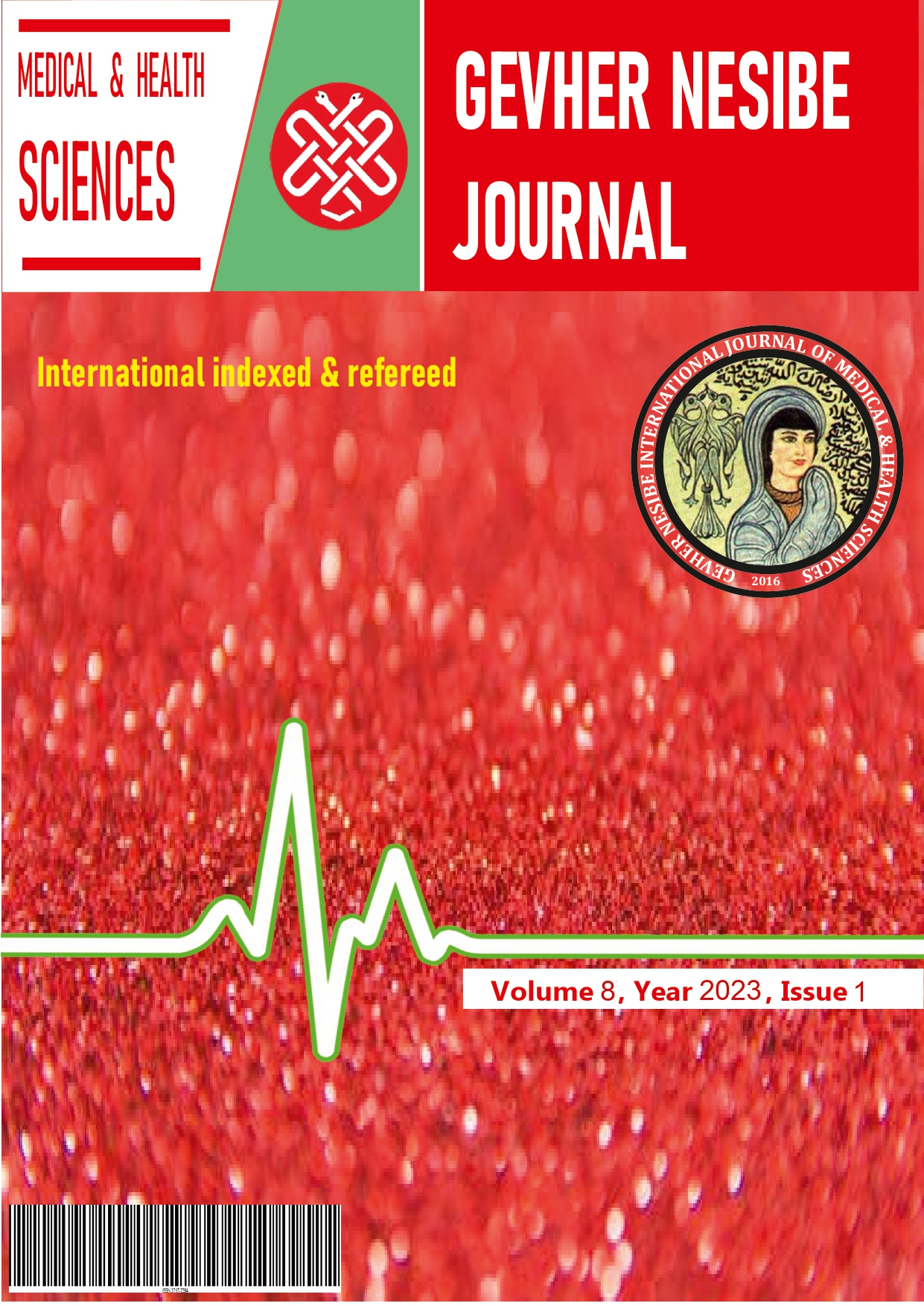The Relationship Between Sociodemogaphic Characteristics of Patients Appliying to an Internal Medicine Outpatient Clinic and Sources of Information about the COVİD-19 Pandemic
DOI:
https://doi.org/10.5281/zenodo.7599602Keywords:
Covid-19, pandemic, social mediaAbstract
Background: This study aimed to investigate the sources of information about the Covid-19 pandemic of people who applied to an internal medicine outpatient clinic.
Methods: A sociodemographic data form and a questionnaire revealing the sources of information about the Covid-19 epidemic were applied to patients after verbal and written consents, using a face-to-face interview technique. The Pearson’s Chi-Square test was used for data analysis.
Results: Of the participants, 121 (48.2%) were men, and 130 (51.8%) were women. The mean age was 47.40 ± 18.06 (youngest 18, oldest 89) years. Most of the participants were married (73.3%) and secondary education (47.6%) graduates. A history of chronic diseases was detected in 63 (25.1%) people. Most of the participants stated that they had obtained information from the press (42.2%).
Conclusıon: The most common source of information about the Covid-19 pandemic was determined as media organizations (42.3%). The selection of information sources is important in informing the public about the pandemic.
References
Abel T, McQueen D. (2020). Critical health literacy and the COVID-19 crisis. Health Promot Int, 35(6),1612-1613.
Akbal E, Gökler ME. (2020). [A Fact Revealed During the COVID-19 Pandemic: Health Literacy]. ESTÜDAM Halk Sağlığı Dergisi, 5,148-155.
Aydın, A. F. (2020). [Disinformation on Social Media in the Post-Truth Period: Covid-19 (New Coronavirus) Pandemic Process]. Asya Studies-Academic Social Studies/ Akademik Sosyal Araştırmalar,4, 76-90.
Budak, F. ve Korkmaz Ş. (2020). [A General Evaluation of the COVID-19 Pandemic Process: The Case of Turkey] Sosyal Araştırmalar ve Yönetim Dergisi, 1: 62-79.
Grasselli G, Greco M, Zanella A, et al.(2020). Risk factors associated with mortality among patients with COVID-19 in intensive care units in Lombardy, Italy. JAMA Intern Med,180(10),1345-1355
Guan W-J, Ni Z-Y, Hu Y, et al.(2020). Clinical characteristics of coronavirus disease 2019 in China. N Engl J Med,382,1708-1720.
Hayır Kanat M, Görgülü Arı A. (2020). [An Investigation of the Media Sources and the Levels of Confidence in Which the Covid-19 Pandemic is Monitored in Terms of Demographic Variables].Ulakbilge Sosyal Bilimler Dergisi, 8(48), 527–546.
Hügül, H. (2011). [Perception Management and Media: Analyzing the presentations of Inegöl events in the press within the scope of perception management], Kara Harp Okulu Savunma Bilimleri Enstitüsü Güvenlik Bilimleri Ana Bilim Dalı, (Unpublished Master Thesis), Ankara.
Kiraz, E. (2019). [Social media and perception management: social media disinformation in the UK’s Brexit process]. PARADOKS Economics, Sociology, and Policy Journal,1, 1-8.
Lenth R. Jawa Appets for Powe and Samle Size ( Computer software). (2009).https://homepage.divms.uiowa.edu/rlent/Power/ (accessed March 11,2022).
Noncommunicable diseases (Internet). World Health Organization (WHO).( accessed Feb 20,2022). https://www.who.int/news-room/fact-sheets/detail/noncommunicable-diseases Ratzan SC.(2001). Health literacy: communication for the public good. Health promotion international,16(2),207-214.
Şener, G. (2009). [Facebook Usage in Turkey], XIVth Internet Conference in Turkey (XIV. Türkiye'de İnternet Konferansı), İstanbul.
[Turkey Health Literacy and Related Factors Survey]. (2018). Ankara: Turkish Ministry of Health General Directorate of Health Promotion. Available from: https://dosyamerkez.saglik.gov.tr/Eklenti/31374,turkiye-saglik-okuryazarligi-duzeyi-ve-iliskili-faktorleri-arastirmasi. (accessed March 10, 2022).
Von Elm E, Altman DG, Egger M, Pocock SJ, Gøtzsche PC, Vandenbroucke JP.(2007). The Strengthening the Reporting of Observational Studies in Epidemiology (STROBE) statement: Guidelines for reporting observational studies. PLoS Med,85,867–72.
Wang D, Hu B, Hu C, et al. (2020). Clinical Characteristics of 138 Hospitalized Patients With 2019 Novel Coronavirus-Infected Pneumonia in Wuhan, China. JAMA,323,1061-1069.
WHO. (2013). Health literacy,The solid facts.
Yiğit İ, Gümüşçü O. (2016). [The effect of epidemic diseases on housing in Manisa and its surroundings (XVI-XXth cent.)]. TÜCAUM International Geography Symposium, Ankara.
Zhu N, Zhang D, Wang W, et all. (2020). A Novel Coronavirus from Patients with Pneumonia in China, 2019.The China Novel Coronavirus Investigating and Research Team. N Eng J Med, 382,727-33.
Downloads
Published
How to Cite
Issue
Section
License
Copyright (c) 2023 GEVHER NESIBE JOURNAL OF MEDICAL AND HEALTH SCIENCES

This work is licensed under a Creative Commons Attribution-NonCommercial 4.0 International License.


